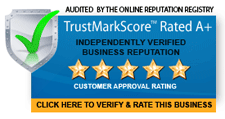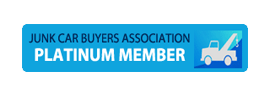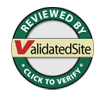Introduction: What to Expect When You Sell Your Car

Overview of common sales channels and when each makes sense
If you want top dollar and can wait, a private sale usually wins; for a complete walkthrough on preparing, pricing, and negotiating to maximize what you get, see how to sell my car: a complete step-by-step guide to maximizing value.
Quick summary of new trends
These trends mean you can often complete big parts of a sale remotely, but strong documentation and high-quality media still drive the best prices; for a step-by-step walkthrough on pricing, listings, inspections, and documentation, see the ultimate guide to selling your car online quickly and safely.
Step 1 — Choose the Best Sales Channel for Your Goals
Private sale: higher net price, higher effort
A private sale typically nets the most money because you eliminate dealer margins and platform fees. List across marketplace sites like Facebook Marketplace, Craigslist, Cars.com, Autotrader, and eBay Motors to reach the widest audience. Expect to handle inquiries, schedule viewings, and manage paperwork—this is a time investment that pays off when you price competitively and present the car well.
Trade-in or dealer sale: fastest and lowest hassle
If you’re buying from the same dealer, trade-ins simplify the transaction and reduce paperwork. Dealers will often factor your trade into financing, which can reduce sales tax in some states. Get multiple dealer trade-in quotes and compare the net offer after taxes and fees so you can tell whether convenience is worth the price trade-off.
iBuyers & instant-offer platforms
They can be ideal for sellers who prioritize speed and a predictable, no-haggle process — New York sellers can also sell your car online for cash through services that provide instant offers.
Step 2 — Price Right Using Current Market Tools
Use multiple valuation sources
Check several trusted tools: Kelley Blue Book (KBB) Instant Cash Offer, Edmunds, Black Book for dealer values, CarGurus for market listings, and recent local classifieds for comparable sales. Each source uses different inputs—trade-in vs retail vs salvage—so compare several to triangulate a realistic list price and a realistic lowest acceptable number.
Factor in condition and market variables
Adjust your price for condition, mileage, local demand, seasonality, and any EV-specific metrics such as battery range and state-of-health. In tight local markets, well-presented cars can command premiums; in slow seasons, expect to negotiate more. Keep a short log of comparable local sales to justify your asking price to buyers.
Step 3 — Prepare the Vehicle for Sale

Detailing and light fixes
A professional or careful DIY detail, addressing small chips, replacing burnt bulbs, and fixing minor trim issues, often yields the best ROI. Clean records of recent services and receipts reassure buyers and support your asking price. Even simple steps—vacuum, shampoo mats, polish headlights—can materially improve first impressions in photos and in-person showings.
EV/battery checklist
If you sell an EV or plug-in hybrid, present a battery health report or state-of-health estimate, confirm the vehicle has current software updates, and include charger and adapter details. Note any remaining battery warranty and typical real-world range. Transparent battery information reduces buyer hesitation and can preserve value.
Step 4 — Documentation: What You Need Before You List
Essential paperwork
Gather the title (or lender payoff instructions if there’s a lien), current registration, service records, emissions or safety inspection certificates where required, and an odometer disclosure form if your state needs one. Having these ready speeds transactions and reduces buyer objections.
History reports and checks
Offer a vehicle-history report such as CARFAX or AutoCheck and confirm the VIN with NICB/VINCheck to reassure buyers about title status and reported incidents. Buyers value transparency; posting a clean history report in your listing often increases trust and response rates.
Step 5 — Take High-Converting Photos and Videos
Photo checklist
Capture full 3/4 exterior shots from both front and rear, interior shots including dash and seats, the odometer, VIN plate, engine bay or electric motor and charging port, trunk, tires, and any damage close-ups. Use daylight, a neutral background, and a clean car to create photos that stand out in crowded listings.
Video walkaround and remote inspection clips
Include a short walkaround video and a 1–2 minute test-drive clip showing startup, instrument cluster, and a few seconds of driving at different speeds. If selling remotely, offer a live video inspection to build buyer confidence. Videos reduce the number of low-quality leads and help justify your price.
Step 6 — Write a Clear, Honest Listing That Sells
Listing elements
Start with a concise headline that includes year, make, model, trim, and notable features. Provide VIN, mileage, transmission, recent services, and highlight extras like new tires or transferable warranties. Disclose damage or mechanical issues up front to avoid wasted time and build credibility.
Keywords & platform optimization
Use platform-friendly keywords: for example, include trim, mileage, and sought-after features such as backup camera or blind-spot monitoring. Reuse and slightly tweak the listing for Cars.com, Autotrader, and Facebook Marketplace to match each site’s search behavior and reach different buyer pools.
Step 7 — Field Inquiries, Screen Buyers, and Arrange Viewings Safely
Screen remotely first
Ask basic qualifying questions before agreeing to an in-person meet: are they local, how will they pay, and why are they buying? Request a photo ID and confirm availability. Pre-screening saves time and filters out unserious or risky inquiries.
Safe meetup best practices
Schedule viewings in public, well-lit locations like police station parking lots or bank parking areas during daytime. Bring a friend, keep your phone accessible, and avoid inviting strangers to your home. These standard safety steps are simple but effective.
Step 8 — Test Drives, Inspections, and Remote Appraisals
Test-drive checklist
Require buyers to show a valid driver’s license and proof of insurance. Plan a safe test-drive route with varied road conditions, accompany the buyer, and retain the keys unless you trust the driver. Limit test-drive distance and avoid letting buyers take the car alone for extended periods.
Remote inspections & video appraisals
Use third-party inspections or video appraisals when dealing with long-distance buyers or iBuyer offers. Many platforms accept mechanic inspection reports; offering one proactively can speed negotiations and reduce last-minute price reductions.
Step 9 — Secure Payment Methods and Handling Money
Preferred secure payments
Bank wire transfers confirmed by your bank, escrow services, and cashier’s checks verified in person at the issuing bank are the most secure options. For local deals, completing the transaction inside a bank lobby and depositing funds immediately reduces fraud risk.
Cautions and red flags
Avoid accepting personal checks without verification, and be wary of buyers pushing peer-to-peer payments without showing cleared funds. Never release the title or keys until you have confirmed funds have fully cleared into your account.
Step 10 — Title Transfers, Bills of Sale & State Requirements
Title transfer process
Follow your state DMV’s process for transferring title—many states now support electronic titles or e-signatures, but procedures and requirements vary. If a lender holds a lien, obtain a payoff letter and clear instructions so the buyer knows how the lender release will be handled.
Documents to complete
Complete the signed title, a bill of sale, an odometer disclosure (if required), and file a release of liability or notice of transfer with your DMV to protect yourself from future liability. Keep copies of everything and get a written acknowledgment from the buyer.
Step 11 — Negotiation Tactics to Maximize Net Proceeds
Pricing strategy and leverage
Start slightly above the lowest price you’ll accept and support your number with comparables and recent receipts. Be ready to offer non-monetary concessions—such as including a recent inspection or a spare key—instead of dropping price. Use any iBuyer or dealer offers as leverage, but focus on net proceeds after fees, taxes, and loan payoff when comparing options.
Experienced sellers say: honesty plus documentation usually wins the best deals—buyers will pay for certainty.
Step 12 — Avoiding Common Scams and Pitfalls
Common scams to watch for
Watch for overpayment schemes, fake escrow sites, cloned VIN listings, identity theft tactics, and buyers insisting on remote pickup before funds clear. Scammers often rush or create emotional pressure; slow things down and verify every step.
Verification best practices
Confirm buyer IDs, insist on bank-verified transfers or escrow, and check with your bank before accepting large cashier’s checks or unknown wire instructions. If something feels off, defer signing documents until you’ve confirmed the payment and identity.
Step 13 — Selling an EV or Plug-In Hybrid: Special Considerations
Battery and software disclosures
Provide a battery health or state-of-charge report, note remaining battery warranty, and explain any known degradation. Document recent software updates and whether subscription services (navigation, concierge) transfer or require cancellation. Clear EV information reduces buyer uncertainty and supports your asking price.
Charging equipment and range
Include chargers, adapters, and typical real-world range data based on your usage. If you can show charging history or recent long charges, do so—buyers evaluate used EVs heavily on predictable range and charging convenience.
Step 14 — Logistics: Delivery, Pickup, Shipping and Consignment
Delivery and transport options
Decide whether the buyer will pick up the vehicle, you’ll meet and hand over, or you’ll arrange professional transport. If shipping, get quotes from reputable carriers, confirm insurance and pickup schedules, and require payment in full before release. Document pickup and delivery times in writing.
Consignment and dealer sale logistics
Consignment shops list and display your car for a fee or commission—good for sellers who want exposure but not the hassle of managing listings. Compare consignment fees against expected private-sale proceeds to see whether the convenience justifies the cost.
Step 15 — Final Checklist After the Sale
Immediate tasks
Sign and notarize documents if required, file a release of liability with your DMV, and remove license plates if your state requires it. Cancel insurance and any automated payments tied to the vehicle, and get a written buyer acknowledgment of the sale and condition.
Recordkeeping
Keep copies of the signed title, bill of sale, payment confirmation, and any messages or receipts for tax records and to resolve potential disputes. Documentation protects you and speeds any DMV follow-up tasks.
Step 16 — Ways to Maximize Net Proceeds: Timing, Minor Investments, and Tax Notes
Timing and small investments
List in higher-demand seasons—spring and early summer are often strongest for many vehicles—and invest in high-impact, low-cost improvements like detailing, replacing floor mats, and fixing headlight clouding. Professional photos and a clean history report typically generate higher offers than aggressive price cuts.
Tax considerations
Most private vehicle sales are not taxable income for personal-use cars, but keep sale records and the bill of sale. If you sold multiple vehicles as a business or are disposing of a fleet, consult a tax professional to confirm reporting requirements.
Appendix: Resources, Templates and Quick Checklists
Useful tools and services
Keep a list of valuation and history services to use during the sale: Kelley Blue Book, Edmunds, CarGurus, CARFAX/AutoCheck, NICB VINCheck, and escrow/payment services. Also note your state DMV page for title and e-title instructions and local inspection requirements.
Sample templates and quick checklists
Prepare a simple bill of sale template, a test-drive waiver, a safe-meet checklist, and a listing template that includes VIN, exact mileage, service highlights, and three key selling points. Use these templates to standardize your process and speed the sale while reducing mistakes.
Ready to turn your unwanted vehicle into quick cash? Kelly Car Buyer, Inc makes it easy to sell almost any type of vehicle—including cars, junk cars, trucks, semi-tractors, and trailers—regardless of condition. Don’t wait to get the best offer—click now to discover how simple and hassle-free selling your vehicle can be, and enjoy fast, top-dollar payouts today!








